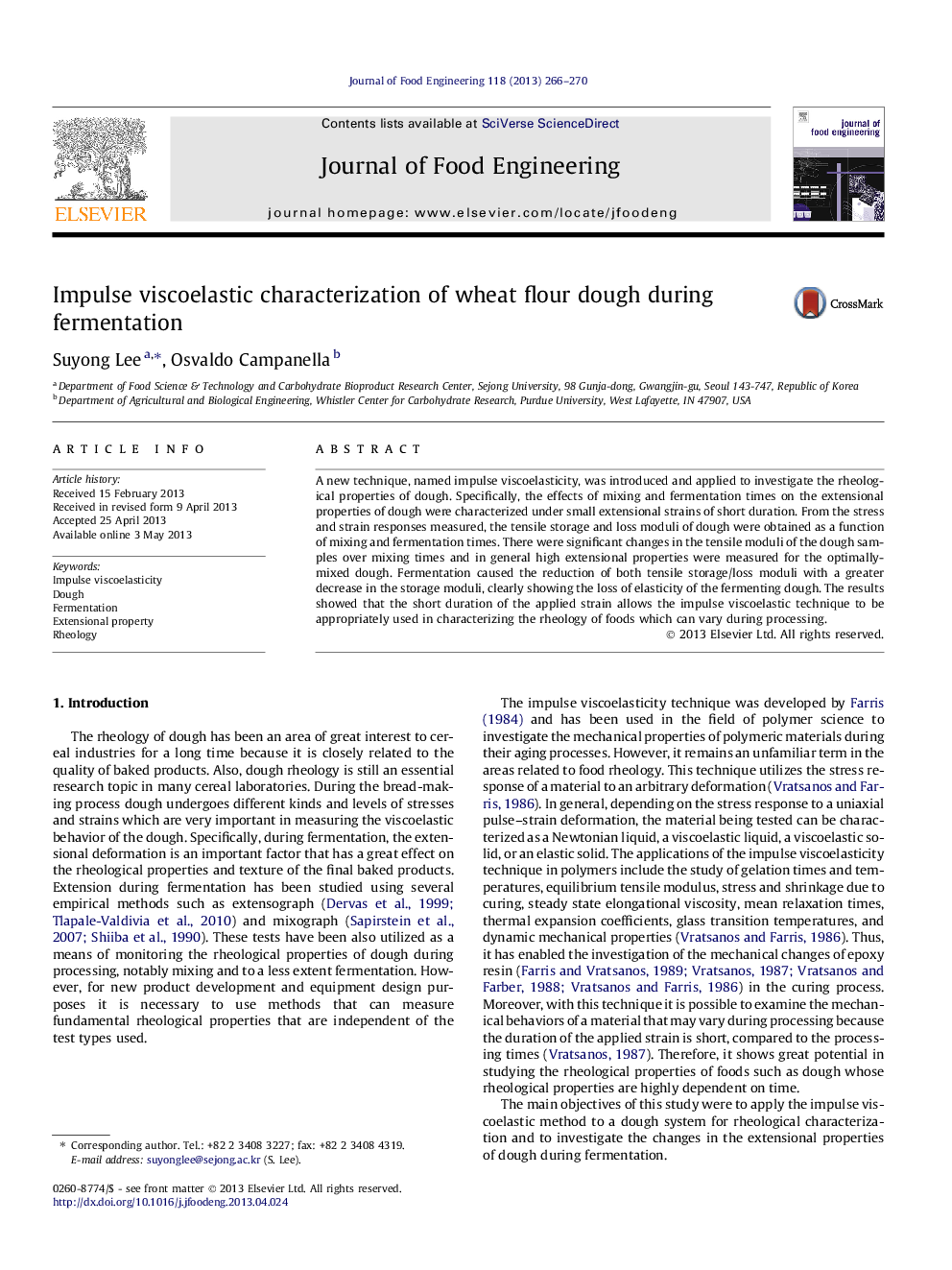| Article ID | Journal | Published Year | Pages | File Type |
|---|---|---|---|---|
| 223363 | Journal of Food Engineering | 2013 | 5 Pages |
•An impulse viscoelastic technique was applied to characterize the rheology of dough.•Tensile storage and loss moduli were obtained under small-short extensional strains.•Optimally-mixed dough had higher extensional properties than under/over-mixed doughs.•Fermentation reduced viscoelastic dough moduli with greater decreased storage moduli.•Impulse viscoelasiticity could be used for dough with highly time-dependent rheology.
A new technique, named impulse viscoelasticity, was introduced and applied to investigate the rheological properties of dough. Specifically, the effects of mixing and fermentation times on the extensional properties of dough were characterized under small extensional strains of short duration. From the stress and strain responses measured, the tensile storage and loss moduli of dough were obtained as a function of mixing and fermentation times. There were significant changes in the tensile moduli of the dough samples over mixing times and in general high extensional properties were measured for the optimally-mixed dough. Fermentation caused the reduction of both tensile storage/loss moduli with a greater decrease in the storage moduli, clearly showing the loss of elasticity of the fermenting dough. The results showed that the short duration of the applied strain allows the impulse viscoelastic technique to be appropriately used in characterizing the rheology of foods which can vary during processing.
